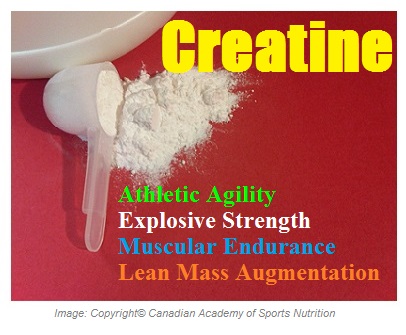 body during protein metabolism, especially break down of the amino acids arginine, glycine, and methionine. Normally, creatine is stored in the muscles in the form of creatine phosphate (CP) along with adenosine triphosphate (ATP). The body uses CP to resynthesize ATP from ADP (adenosine diphosphate). In other words, CP is the phosphate donor to ADP to make ATP.
body during protein metabolism, especially break down of the amino acids arginine, glycine, and methionine. Normally, creatine is stored in the muscles in the form of creatine phosphate (CP) along with adenosine triphosphate (ATP). The body uses CP to resynthesize ATP from ADP (adenosine diphosphate). In other words, CP is the phosphate donor to ADP to make ATP.Natural Sources:
Creatine is naturally produced in the body mainly by the liver and kidneys and a small amount by the pancreas. Then it is transported to the muscles to be consumed. About 95% of creatine in the body is found in the skeletal muscles. The remaining 5% of creatine can be found in the heart, brain, and testicles.
The main food sources of creatine are fish and red meats. Each pound of herring, pork, salmon, and beef provides 3.8, 2.3, 2, and 2 grams of creatine, respectively. Tuna fish contains 1.8 grams of creatine per pound. The amount of creatine in cod fish is lower than that of tuna.
Athletic Benefits of Creatine:
Being touted as one of the most popular supplements in sports, creatine is mostly 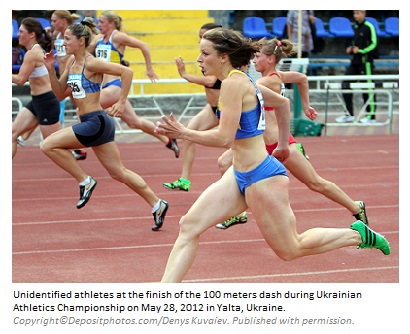 effective in those activities that require short, intense bursts of energy, for example, weight lifting, wrestling, body building, martial arts, sprinting, and boxing. In fact, the energy required to perform a brief explosive exercise lasting 1 -15 seconds largely depends on the amount of creatine phosphate (CP) stored in the muscles.
effective in those activities that require short, intense bursts of energy, for example, weight lifting, wrestling, body building, martial arts, sprinting, and boxing. In fact, the energy required to perform a brief explosive exercise lasting 1 -15 seconds largely depends on the amount of creatine phosphate (CP) stored in the muscles.
Creatine is stored in the muscles in two forms: about 70% as CP, and 30% as free creatine. The more the body stores CP in the muscles, the better the muscles can perform during explosive exercise and short duration – high intensity events. During explosive exercise, the body needs quick synthesis and resynthesis of ATP, which primarily relies on stored CP in the muscles. If you do not have enough CP stored in the muscles to resynthesize ATP at the required rate, CP stores become depleted during explosive exercise and athletic performance deteriorates.
Potential athletic benefits of creatine are:
- Increases muscle strength.
- Augments lean body mass.
- Improves athletic performance during exercise or competitions that require short, intense bursts of energy.
- Enhances athletic agility.
- May help increase anaerobic threshold.
- Delays muscle fatigue by decreasing lactic acid buildup.
- Accelerates energy recovery between bouts of short duration – high intensity exercise.
- Improves training intensity.
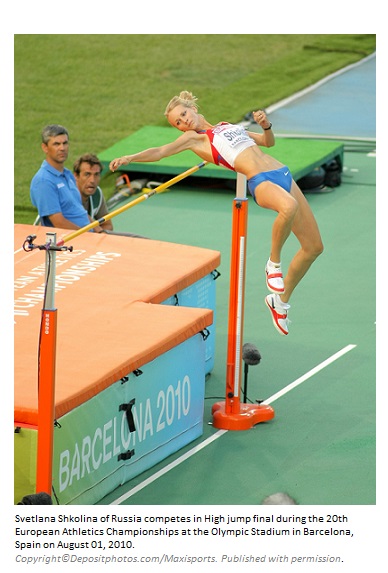
|
Potential Benefits of Creatine in Sports: |
||
|
Maximum Benefits |
Moderate Benefits |
Minimum Benefits |
|
Athletics: – Dash 100 m – Discus throw – Long jump – Hamme throw -High jump – Javelin throw – Pole vault – Shot pot – Triple jump -100 meters hurdles -110 meters hurdles – 4X100 relay Baseball Bodybuilding Cricket Curling Diving Golf Gymnastics Judo: – 2 minutes events -3 minutes events Power lifting Shooting Ski (See “Sports”) Softball Swimming (See “Sports”) Weightlifting |
Archery Athletics: -Dash 200 m -Dash 400 m -4X400 relay – 800 M -400 meters hurdles Badminton Basketball Bobsleigh Boxing Canoe/Kayak Cycling: – BMX -Road cycling -Track cycling Fencing Football (Soccer) Gymnastics: -Artistic, floor exercises -Acrobatic, all events -Rhythmic, all events Handball Hockey Judo: – 4 minutes events – 5 minutes events Lacrosse Luge Modern pentathlon Rowing Rugby Sailing Skating (See “Sports”) Ski (See “Sports”) Swimming (See “Sports”) Table tennis Taekwondo Tennis Volleyball Water polo Wrestling |
Athletics: –1500 M –5000 M –10000 M –20 km walk –50 km walk –3000 M steeplechase –Marathon Biathlon Cycling: –Cross-county Skating (See “Sports”) Ski: –Cross-county Swimming (See“Sports”) Triathlon |
Non – Athletic Benefits of Creatine:
Creatine monohydrate may show potential benefits in the following conditions: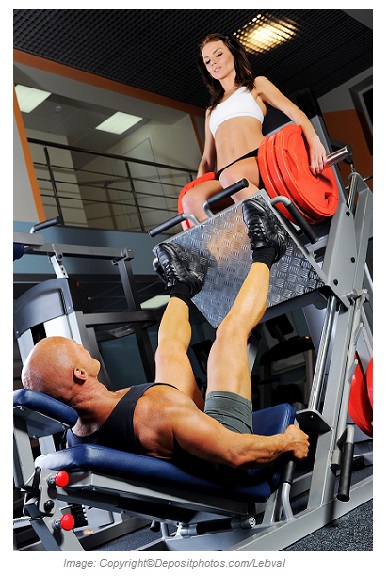
- Heart diseases:
- Heart arrhythmias
- Congestive heart failure.
- High cholesterol and triglyceride levels.
- Rheumatoid arthritis (RA).
- McArdle’s disease.
- Neuromuscular diseases:
- Muscular dystrophy.
- Myopathies.
- Huntington`s diseases.
- Amyotrophic lateral sclerosis (ALS).
- Parkinson`s disease.
How to Take Creatine:
About creating supplementation, there are few protocols:- Loading – Maintaining Protocol.
- Non – Loading Protocol.
- High Dose – on – Training Protocol.
Loading – Maintaining Protocol:
This is the most common way of creatine supplementation among athletes, and actually generates better results than others. This protocol includes loading and maintaining phases.Loading Phase:
During this phase, you load your muscles for 5 – 7 consecutive days and the dosage of creatine is 0.3 gr/kg/day (15 – 25 grams a day).
Maintaining Phase:
This phase comes after the loading phase, and the dosage of creatine is 3 – 5 grams daily for 6 – 8 weeks. If you stop maintenance dosage for 5 days or more, you should start from the beginning.
Non – Loading Protocol:
This protocol does not include loading phase, and creatine supplementation starts with 5 – 7 grams a day for 6 – 8 weeks.
High Dose – on – Training Protocol:
When following this protocol, creatine is taken only on training days with the dosage of 0.3 gr/kg/day (15 – 25 grams).
Absorption and Metabolism of Creatine:
After being ingested, creatine absorbs into the blood stream through the upper part of the small intestine and is transported to the liver and muscles wherein breaks down into creatine phosphate (CP) with the help of an enzyme called Mi-CK (phosphorylation reaction). The most important cofactors in the conversion of creatine into CP are vitamins B12, B9, and B6.
CP in the muscles comes from three sources: 1) CP made from creatine in the liver, 2) CP made from creatine in the muscles, and 3) CP made from ATP in the muscles.
Then the muscles store CP and use it to resynthesize ATP from ADP, a reaction that is called re-phosphorylation and catalyzed by the two enzymes Mi-CK and MM-CK.
The leftover creatine after re-phosphorylation is converted into creatinine. In fact, creatinine is a by-product of the breakdown of CP and excreted by the kidneys.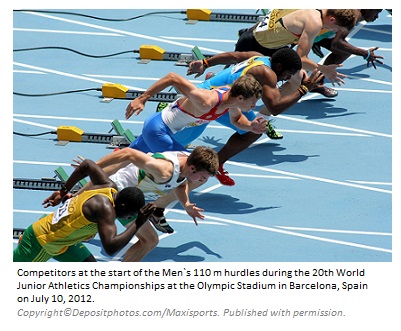

The amount of creatine provided to the body through external sources does not affect the natural production of creatine in the body. In other words, oral creatine intake does not have a negative feedback on the internal production of creatine.
The more the muscles pick up creatine from the blood, the more storages of CP would be available in the muscles. Creatine uptake into the muscles depends on sodium and is mediated by insulin. This means that taking creatine along with large amounts of glucose enhances creatine uptake.
Moreover, taking creatine along with insulin mimickers (alpha-lipoic acid, chromium picolinate, and vanadium) may enhance creatine uptake in the muscles. Since insulin level increases creatine uptake, one of the best ways to maintain creatine stores in the muscles is to take creatine with a high GI carbohydrate after exercise during the anabolic window. Another best time to ingest creatine is approximately 30 – 40 minutes before exercise.
Betaine (trimethyl glycine), a phytonutrient found in significant amounts in beetroot, can enhance formation of creatine in the body. It acts as a methyl donor toglycocyamine, a metabolite of glycine, to produce creatine.
When supplementing with creatine, you need to drink more water. First of all, the main purpose of taking creatine is to produce ATP more and fast. And ATP requires water to generate energy. Secondly, creatine increases intracellular osmotic pressure. This leads to moving water from extracellular compartment to intracellular compartment (water retention).
Creatine Cycling:
Creatine cycling means that creatine is taken for few weeks followed by a complete  cessation of taking it. Even though experts still debate the pros and cons of creatine cycling, we strongly suggest that you cycle your creatine intake as 2 – 1 – 2 – 1, which means you take creatine for 2 moths (8 weeks) and then stop consuming it for one month (4 weeks). Then you could start again. The primary purpose of creatine cycling is to remove pressure and workload from the kidneys that are responsible for excreting creatinine, the end product of creatine, from the body.
cessation of taking it. Even though experts still debate the pros and cons of creatine cycling, we strongly suggest that you cycle your creatine intake as 2 – 1 – 2 – 1, which means you take creatine for 2 moths (8 weeks) and then stop consuming it for one month (4 weeks). Then you could start again. The primary purpose of creatine cycling is to remove pressure and workload from the kidneys that are responsible for excreting creatinine, the end product of creatine, from the body.
Continuous consumption of creatine may interfere with normal function of the kidneys especially if there are underlying predisposing factors for kidney damages. Insulin is degraded by the kidneys. So, poor kidney function alters the metabolism of insulin, leading to insulin resistance and impaired function of insulin and subsequently diminishing efficiency of creatine.
Creatine is unstable in a solution. This is why it is highly recommended that you consume your creatine within 15 – 30 minutes after dissolving in water or juice, and do not keep your creatine solution for more than 6 hours.
Side Effects:
The most common side effect of creatine that has been consistently reported is water retention. Some creatine users may experience abdominal cramps, dehydration, stomach distress, mild diarrhea, or bloating.
Interactions and Contraindications:
You should exercise caution when taking creatine in the following conditions:
- Along with large amounts of caffeine, as it may negate the effectiveness of creatine.
- During warm weather, as it may predispose to dehydration.
- When traveling to high altitudes, as it may trigger or aggravate mountain sickness in susceptible individuals.
Creatine should be avoided in the following conditions:
- Athletes with previous history of rhabdomyolysis (see “Post – Exercise Rhabdomyolysis” under the section of “Athletic Disorders”).
- Athletes who have survived a second impact syndrome (SIS).
- Allergy to creatine, which shows itself as asthmatic reactions after ingesting.
- Liver diseases.
- Kidney diseases.
- Diabetes.
- Kidney transplant recipients.
- Systemic Lupus Erthematosus (SLE).
- People with mania who take lithium.
- People with hypertension who take ACE inhibitors.
- Along with nephrotoxic medications:
- Aminoglycosides.
- Non-steroidal anti-inflammatory drugs (NSAIDs), such as Advil, Motrin, diclofenac, and sulindac.
- Cyclosporine.
- Cyclophosphamide.
- Beta- blockers.
- Amphotericin B.
- Cisplatin.

